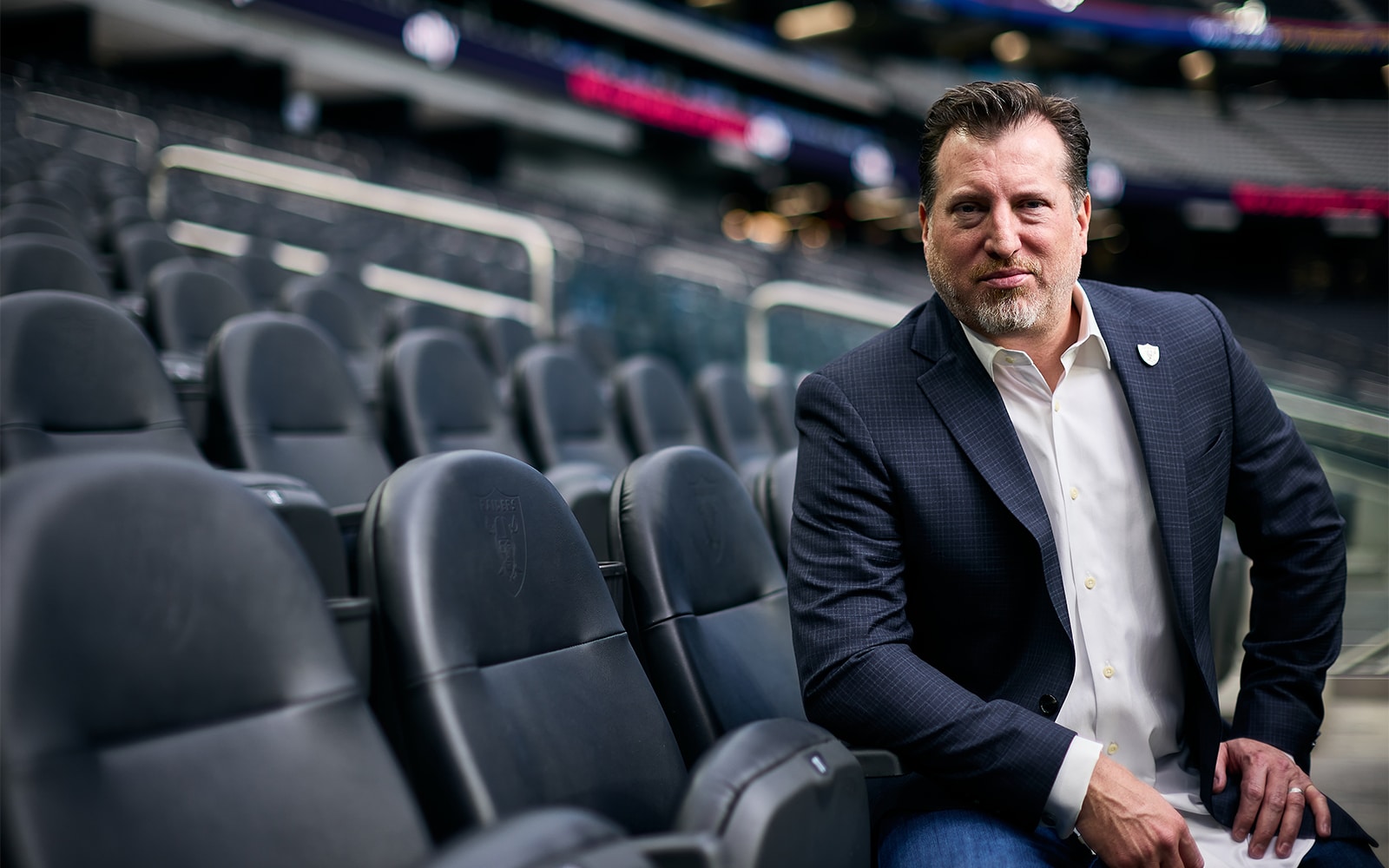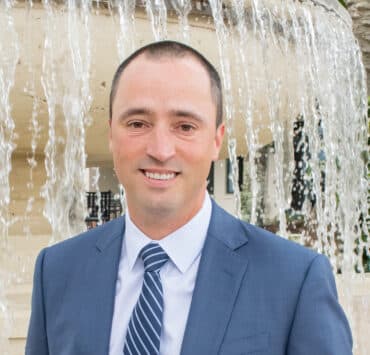|
Getting your Trinity Audio player ready...
|
In 2014, the then Oakland Raiders were heading to Seattle to take on the Seahawks. The team plane carried big names like quarterback Derek Carr and star running backs Maurice Jones-Drew and Latavius Murray. One lesser-known non-position player was also making the trip: Vice President of Information Technology Matthew Pasco.
Pasco was traveling with the team on a reconnaissance mission ahead of a new stadium project. Then, the team was a co-tenant at the Oakland Coliseum with MLB’s Athletics, which had eighty-two regular season home games compared to the Raiders’ eight. The NFL franchise was exploring how it could find a new home to give fans a better experience, and Pasco wanted to make sure that new home had the right technology infrastructure.
“The fan experience is huge in today’s world of sports and live events, and we knew we had the chance to do something special if we started early to bring in the right systems and features,” Pasco says.
“We want to make sure what we’re doing with technology meets and exceeds our fans’ expectations and gives them a way to interact with the game as they come to our stadium.”
Matthew Pasco
As the Raiders players warmed up before the game, Pasco walked their rivals’ stadiums and interviewed his counterparts. While teams are fierce competitors on the field, personnel are cordial and collaborative. “We’re all trying to accomplish the same thing and are willing to share strategies and best practices,” he explains. Watching fan behavior after kickoff gave him important insight regarding mobile ordering, in-seat delivery, grab-and-go purchasing, and other innovations.
When the Raiders filed the necessary documents to relocate to Las Vegas in January 2017, Pasco was ready with a robust tech strategy. While the plan has many complex components, the philosophy behind it remains simple.
“We want to make sure what we’re doing with technology meets and exceeds our fans’ expectations and gives them a way to interact with the game as they come to our stadium,” Pasco says.
It’s the same approach he’s taken since day one. Pasco, a Northern California native, grew up playing with gadgets and devices his father brought home from employers like Xerox, Atari, and IBM. He served in the Marines where he worked in aviation electronics, got into information technology consulting as a civilian, and then joined the Raiders in 2002 to design and run the team’s website network and e-commerce platform. He took over as head of the IT department in 2007.

Ten years later, when the Las Vegas Raiders started building Allegiant Stadium, Pasco’s team put his plan into action. Their first priority was “lightning-fast internet connectivity everywhere” to enable mobile ticketing, social media engagement, food orders, and the all-important fantasy football app management.
Pasco uncovered one major pain point when he visited other stadiums. Some other teams used one network for security cameras, another for point-of-sale systems, and another for Wi-Fi. That set-up requires many devices and expensive maintenance and prevents vendors from working together. At Allegiant, he partnered with Cisco, AmpThink, and Cox to build one converged, redundant network that runs IPTV, VoIP phones, security cameras, point-of-sale, Wi-Fi, and all other tech components.
“Cox is deeply invested in connecting Las Vegas and exceptionally proud to work alongside Matthew and his team to power Allegiant Stadium and ensure best-in-class connectivity,” says Steve Westerman, vice president at Cox Business Las Vegas.
While stadium design and implementation teams include several thousands of people, Pasco made sure his group was leading important parts of the decision-making process and involved in all major design discussions.
“Pro sports and construction have both been around for a very long time, and technology hasn’t,” he says. “But since tech is now a core piece of those worlds, we have to have a seat at the table.”
Instead of letting vendors impose their will, Pasco set requirements for participating in Allegiant’s singular network, and the move helped his cybersecurity managers keep everything safe and secure.
The Raiders’ tech group implemented a similar plan at the nearby Intermountain Healthcare Performance Center and Raiders Headquarters, a 135,000-square-foot office area and 150,000-square-foot field house located 10 miles south of the Allegiant Stadium. Private point-to-point fiber connections between all buildings lets coaches and staff share documents and other files securely.
Coaches and players also share game and practice footage, and a secure file transfer system makes this process more efficient. Instead of gathering in one place to watch DVDs, it all happens on-demand through smart tablets and other handheld devices. Those using the modern system can scrub through games and watch replays from various angles and speeds to better analyze the game.
“Pro sports and construction have both been around for a long time, and technology hasn’t. But since tech is now a core piece of those worlds, we have to have a seat at the table.”
Matthew Pasco
Unfortunately, after all this hard work, the COVID-19 pandemic forced the Raiders to open their new stadium without fans in attendance. Still, Pasco asked his IT professionals to act as if Allegiant Stadium were full and take the opportunity to practice operating all systems to uncover and fix any bugs or problems.
Finally, on September 13, 2021, the Raiders hosted fans for their first regular season game, a Monday Night Football matchup with the Baltimore Ravens. Quarterback Derek Carr passed for 435 yards and 2 touchdowns to lead Las Vegas to an overtime victory.
The night was also a “W” for the IT team. Pasco’s tech plan worked without incident and the sixty-some thousand fans at Allegiant enjoyed a seamless experience while immersed in the on-field action.
Now, Pasco is refining what he’s built with his team, investigating new technologies, and doing all he can to support the Raiders as they look to build upon a playoff appearance in their pursuit of a championship.
As the pioneer for Lens Antennas, MatSing has transformed the mobile connected experience in stadiums and venues globally. Our patented multi-beam lens antennas deliver un-matched network capacity and the most reliable connectivity in the industry. We are committed to delivering a future-proof, high-performance network with the lowest cost of ownership.















